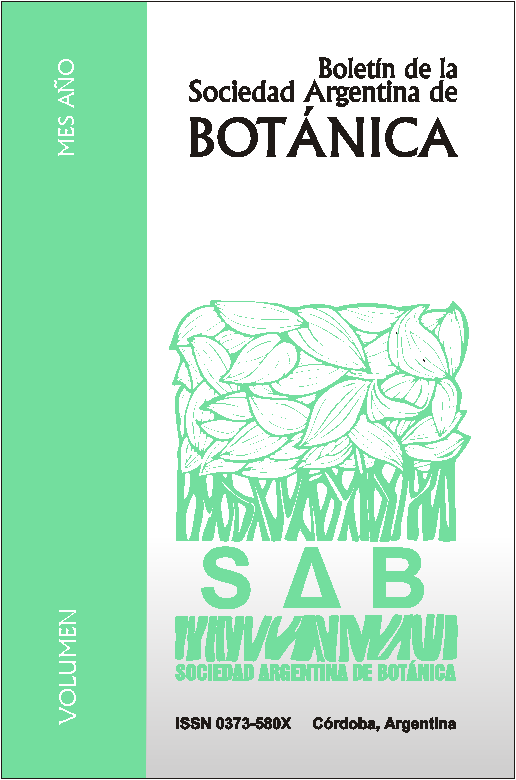Geographical range and spatial structure of genetic lineages in Sophora linearifolia (Fabaceae), an endemic shrub of Central Argentina.
DOI:
https://doi.org/10.31055/1851.2372.v52.n1.16915Keywords:
Chloroplastidial DNA, biogeography, disjunct, distribution, ecological niche modelling, phylogeography, neoendemic, Sierras Pampeanas.Abstract
Geographical range and spatial structure of genetic lineages in Sophora linearifolia (Fabaceae), an endemic shrub of Central Argentina. A large number of endemic species occur in the Sierras of Córdoba and San Luis. A significant group of them shows a disjunct geographic distribution between these two mountain regions. Until the present study, there were none genetic studies that allow us to infer historical processes underlying this geographical pattern. For this purpose, we characterize the distribution area and phylogeographic patterns of Sophora linearifolia, across its geographic range which includes Sierras Chicas (SC) and Cumbres de Gaspar (CG) in Córdoba and in the southwestern
area of Sierras of San Luis (SL). We compared the current with the predicted species area of distribution using ecological niche modelling analysis. We also analyzed genetic variability and spatial structure of the DNA chloroplast marker trnH-psbA, and reconstructed the genealogical relationships among the
retrieved haplotypes. Current and the predicted distribution agreed in showing a climatic/topographic disjunction between Sierras of Cordoba and San Luis hills, although the current distribution presents a disjunction between SC and CG in Córdoba, not shown in the potential distribution map. We obtained eight haplotypes with restricted distribution and low levels of genetic differentiation that were grouped into four phylogroups: SC, CG and two in SL. Our results indicate that S. linearifolia presents low dispersal ability and it would have recently diversified, suggesting a neoendemic taxon.
Downloads
Published
Issue
Section
License
Provides immediate and free OPEN ACCESS to its content under the principle of making research freely available to the public, which fosters a greater exchange of global knowledge, allowing authors to maintain their copyright without restrictions.
Material published in Bol. Soc. Argent. Bot. is distributed under a Creative Commons Attribution-NonCommercial-ShareAlike 4.0 International license.





